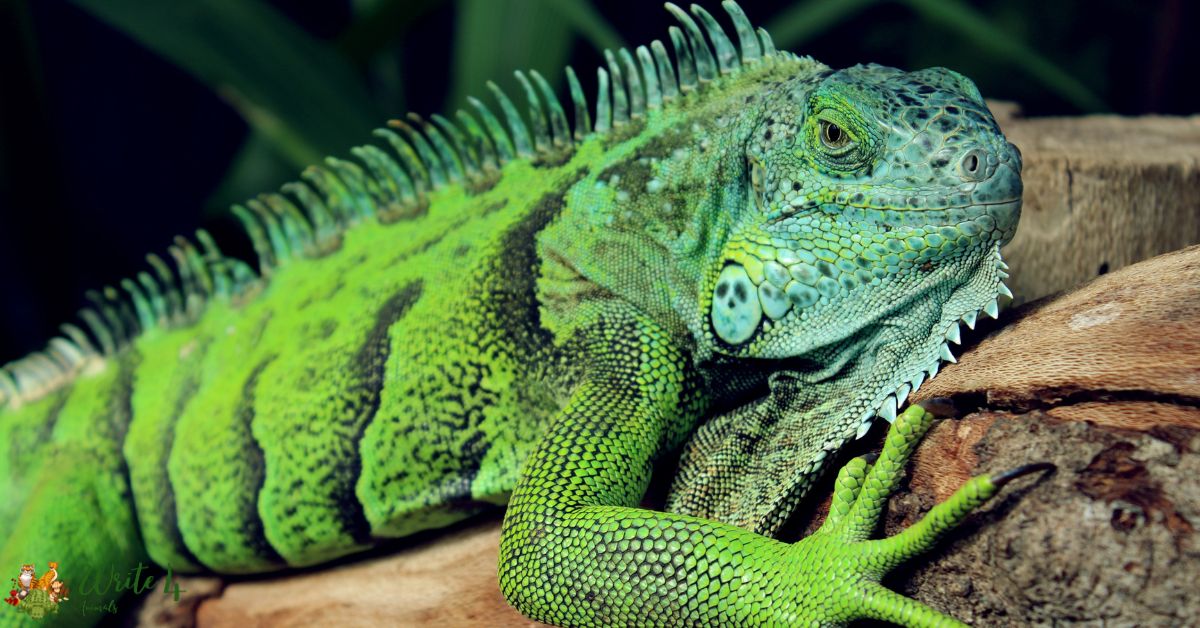Mexico is a country known for its remarkable biodiversity, and this extends to its reptilian inhabitants. With its diverse landscapes, from arid deserts to lush rainforests, Mexico provides a wide range of habitats that support a multitude of lizard species.
In this blog post, we will delve into the fascinating world of Mexican lizards and explore 21 distinct types found within the country’s borders. From vibrant geckos to sleek skinks, each species has its own unique characteristics, adaptations, and significance within the Mexican ecosystem.
21 Types of Lizards in Mexico (With Pictures)
1. Green Iguana
The Green Iguana (Iguana iguana) is a large lizard species found in various parts of Mexico. Known for their vibrant green coloration, they are one of the most recognizable reptiles in the world.
Green Iguanas have a robust body and a long tail, which they use for balance while climbing trees. They are primarily herbivorous, feeding on leaves, fruits, and flowers.
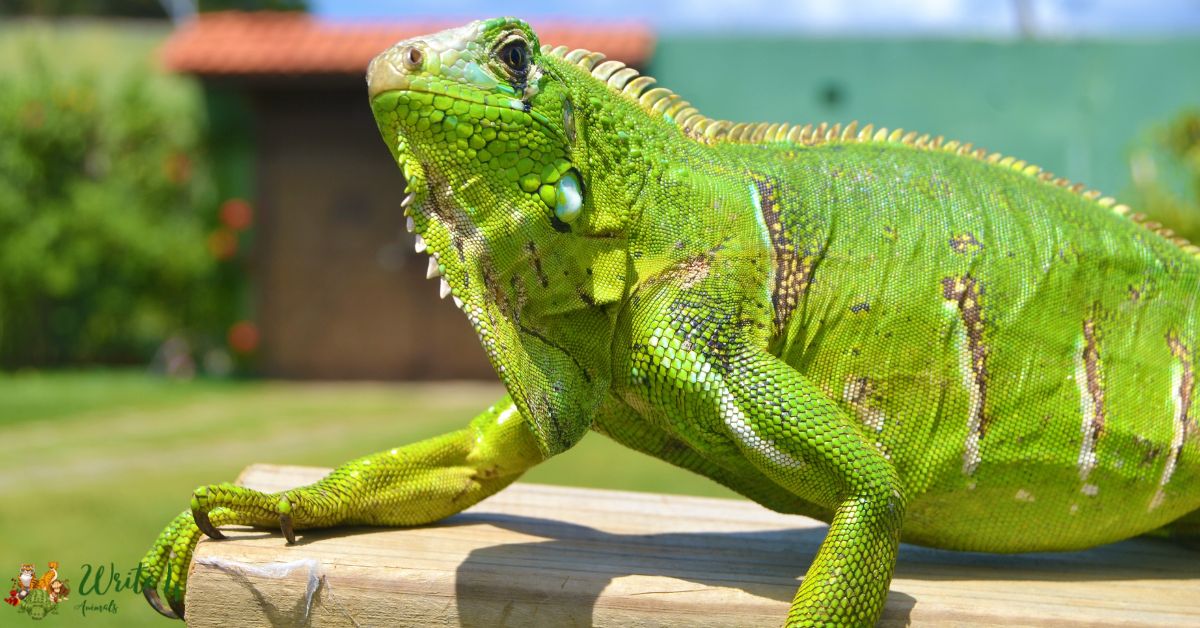
Green Iguanas are diurnal and bask in the sun to regulate their body temperature. They are excellent swimmers and can even drop from trees into water bodies to escape predators.
While young Green Iguanas may exhibit docile behavior, adult males can become territorial and display aggression. As pets, they require a spacious enclosure, UVB lighting, and a varied diet to thrive.
2. Mexican Beaded Lizard
The Mexican Beaded Lizard (Heloderma horridum) is a venomous lizard species found in Mexico, particularly in the states of Sonora and Sinaloa. Known for their distinctive textured scales and dark coloration with yellow bands, they are highly sought after for their unique appearance. Mexican Beaded Lizards are primarily carnivorous, feeding on small vertebrates and eggs.
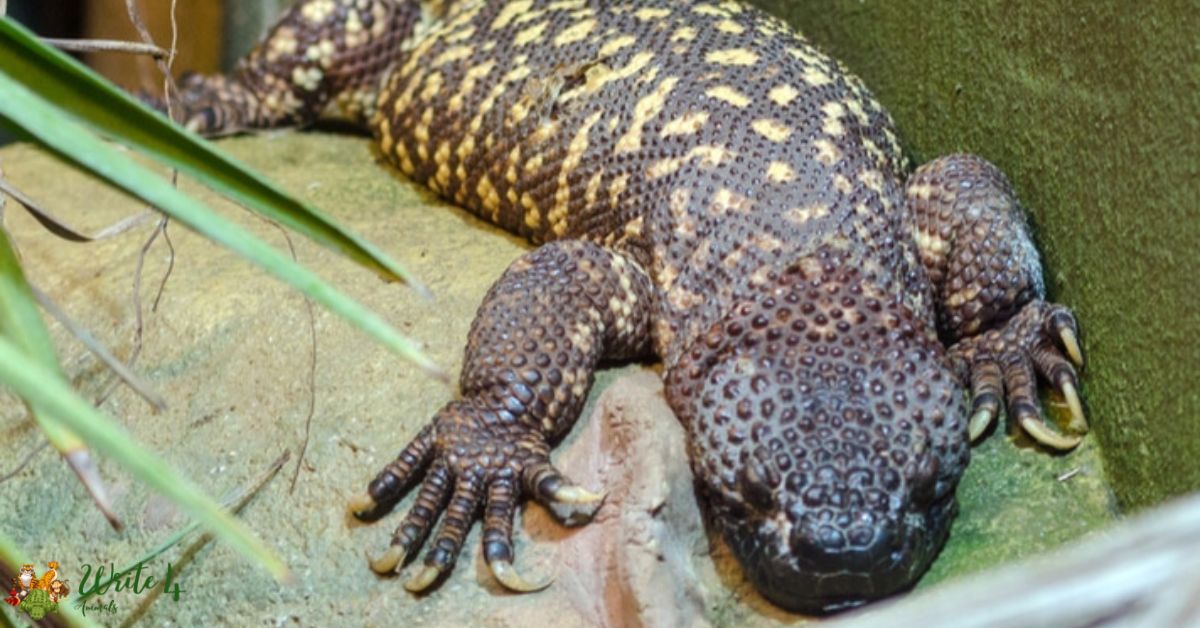
They possess venomous glands in their lower jaw, though they are generally docile and pose little threat to humans when left undisturbed. These lizards are primarily terrestrial but are also adept climbers.
They have a slow metabolism, which allows them to go for extended periods without food. Due to their venomous nature, they require specialized care and should only be kept by experienced reptile enthusiasts with the necessary permits.
3. Mexican Alligator Lizard
The Mexican Alligator Lizard (Abronia graminea) is a stunning lizard species found in the cloud forests of Mexico. They are known for their vibrant colors, with males displaying a bright green body and a vivid blue tail, while females have a more subdued brown or olive coloration.
Mexican Alligator Lizards are arboreal and spend much of their time in the trees, using their long limbs and prehensile tail to navigate their environment.
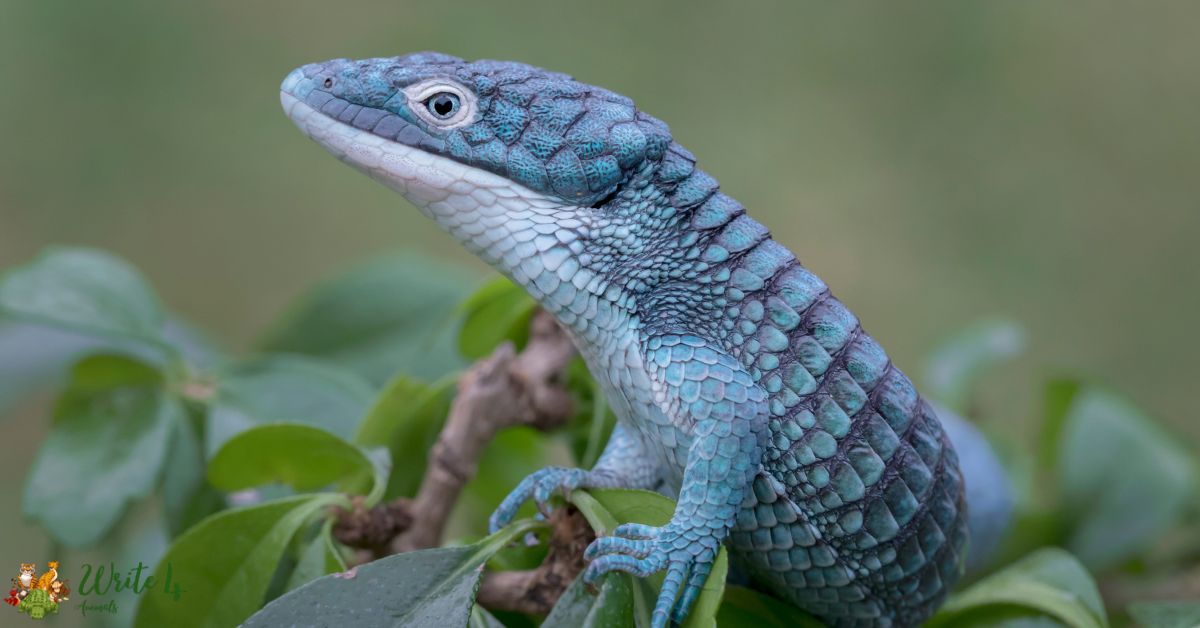
They primarily feed on insects, spiders, and small invertebrates. These lizards have a unique reproductive strategy, with females giving live birth to fully-formed offspring.
They require a humid and well-vegetated enclosure to mimic their natural habitat. Due to their specific care needs and limited availability, they are more commonly found in the collections of experienced reptile keepers.
4. Mexican Spinytail Iguana
The Mexican Spinytail Iguana (Ctenosaura pectinata) is a medium-sized lizard species found in various regions of Mexico. They are named for the spiny scales along the base of their tail, which provides them with defense against predators.
Mexican Spinytail Iguanas are typically brown or gray in coloration with darker bands across their body. They are diurnal and can often be found basking on rocks or in trees to absorb heat.
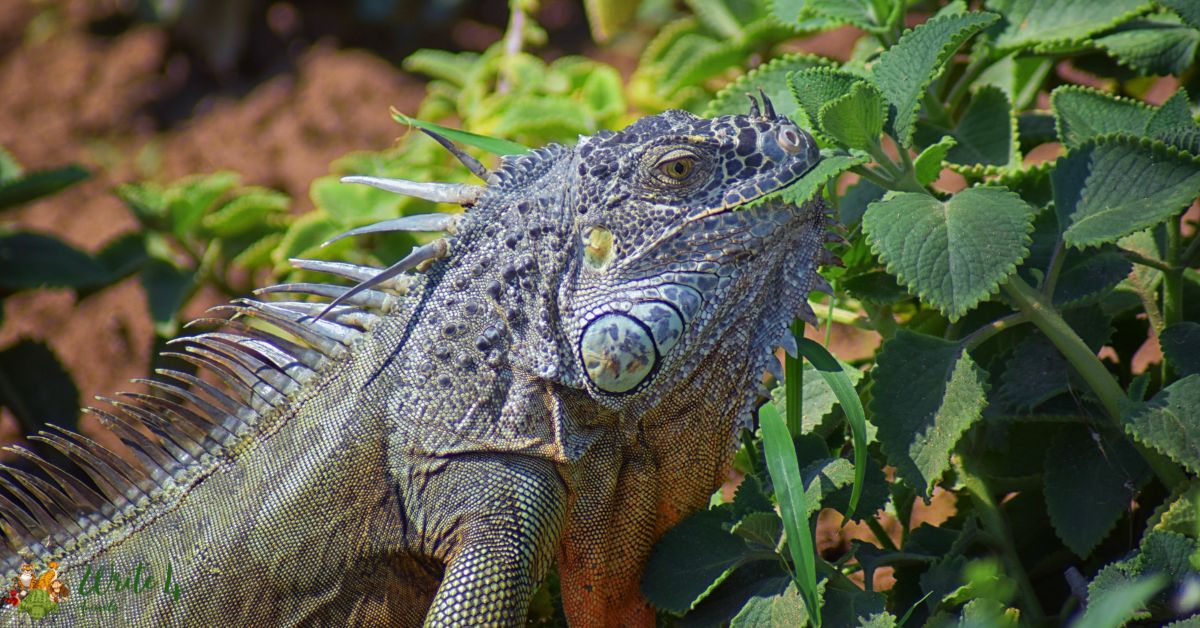
These iguanas are primarily herbivorous, feeding on a variety of plant material, including leaves, flowers, and fruits. They are agile climbers and are capable of running on their hind legs when necessary.
Mexican Spinytail Iguanas are highly adaptable and can be found in a range of habitats, from dry deserts to tropical forests. In captivity, they require a spacious enclosure with UVB lighting, a heat source, and a varied diet to maintain their health and well-being.
5. Mexican Plateau Horned Lizard
The Mexican Plateau Horned Lizard (Phrynosoma orbiculare) is a fascinating reptile species endemic to Mexico. These unique lizards are known for their distinctive horn-like scales, which adorn their head and body.
Their rough, textured skin and spiky appearance serve as effective camouflage against predators. Mexican Plateau Horned Lizards primarily inhabit arid regions and can be found basking on rocks or sand to regulate their body temperature.
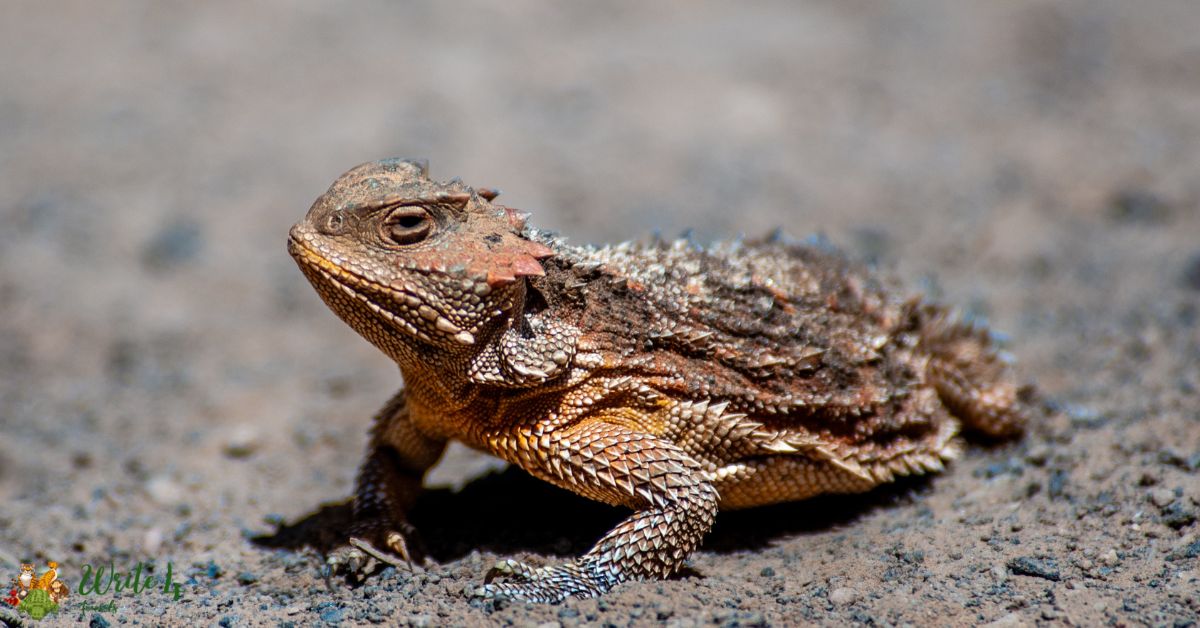
They are primarily insectivorous, feeding on ants, beetles, and other small invertebrates. These lizards have a fascinating defense mechanism: they can inflate their bodies and shoot blood from their eyes when threatened.
The Mexican Plateau Horned Lizard plays an important role in its ecosystem, controlling insect populations and contributing to the overall balance of the arid habitats they inhabit.
6. Mexican Spiny Lizard
The Mexican Spiny Lizard (Sceloporus magister) is a widespread and charismatic lizard species found throughout Mexico. With its robust body and spiky scales, it has earned its name.
These lizards exhibit sexual dimorphism, with males displaying vibrant colors such as blue, green, or orange on their throats and bellies during the breeding season. Mexican Spiny Lizards are diurnal and highly adaptable, inhabiting a variety of habitats, from forests to rocky areas. They are primarily insectivorous but may also consume small vertebrates and plant material.
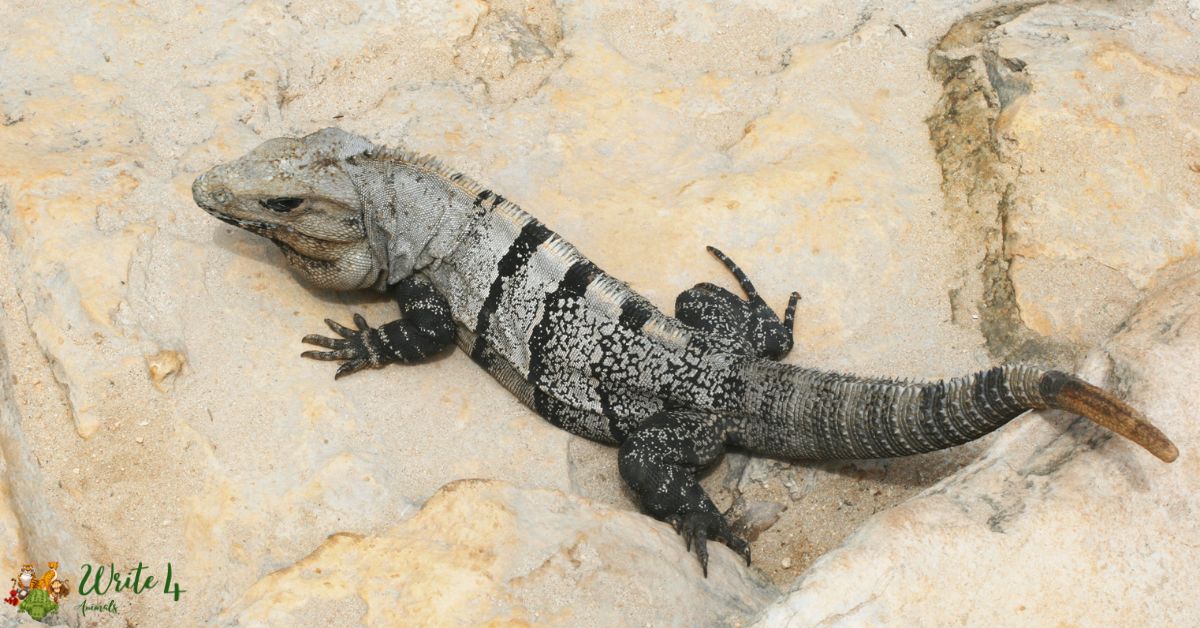
These lizards are agile climbers and can often be observed basking on rocks or tree trunks. They are known for their quick movements and ability to escape predators by dropping their tails. The Mexican Spiny Lizard is not only a fascinating species to observe but also serves as an important link in the ecological chain of Mexico’s diverse ecosystems.
7. Mexican Leaf-toed Gecko
The Mexican Leaf-toed Gecko (Phyllodactylus tuberculosus) is a small and agile gecko species native to Mexico. As its name suggests, it has specialized toe pads that allow it to climb smooth surfaces, including glass or tree bark.
These geckos are nocturnal, emerging at night to hunt for small insects and invertebrates. The Mexican Leaf-toed Gecko exhibits a range of color variations, from shades of gray to brown, with intricate patterns that provide excellent camouflage.
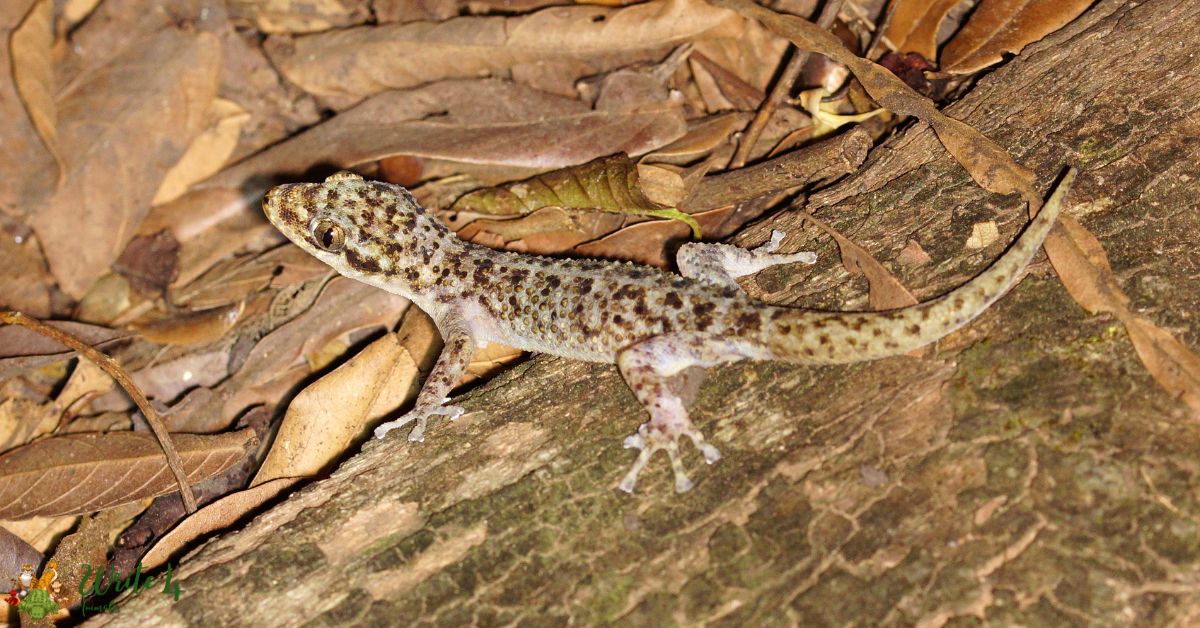
They are relatively small, typically reaching lengths of 3 to 4 inches. These geckos are adaptable and can be found in various habitats, including forests, deserts, and rocky areas.
Due to their small size and unique climbing ability, they are a joy to observe in both natural and captive settings, making them popular among reptile enthusiasts.
8. Mexican Banded Gecko
The Mexican Banded Gecko (Coleonyx elegans) is a visually striking gecko species found in Mexico. With its distinctive bands of color and compact size, it has become a favorite among reptile enthusiasts.
Mexican Banded Geckos are primarily nocturnal, emerging at night to hunt for small insects and invertebrates. They have adhesive toe pads that allow them to climb walls and other vertical surfaces.
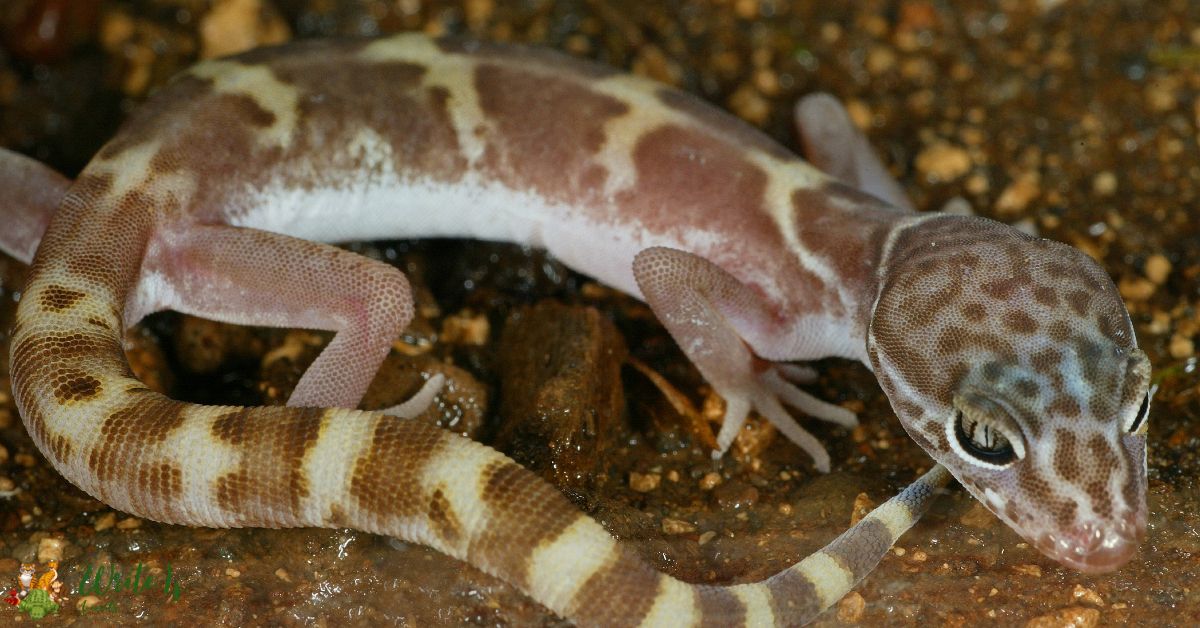
These geckos have a docile temperament and are relatively easy to care for, making them popular pets. They require a warm and dry habitat, with appropriate hiding spots and a diet consisting of small invertebrates.
Mexican Banded Geckos are also known for their unique vocalizations, emitting chirping sounds during courtship and territorial disputes. With their captivating appearance and low-maintenance care, they are a delightful addition to any reptile collection.
9. Mexican Black Kingsnake
The Mexican Black Kingsnake (Lampropeltis getula nigrita) is a stunning snake species found in various regions of Mexico. They are known for their glossy black coloration, which sets them apart from other kingsnake subspecies.
Mexican Black Kingsnakes are non-venomous and have a docile nature, making them popular choices among reptile enthusiasts. They primarily feed on rodents, lizards, and other small vertebrates.
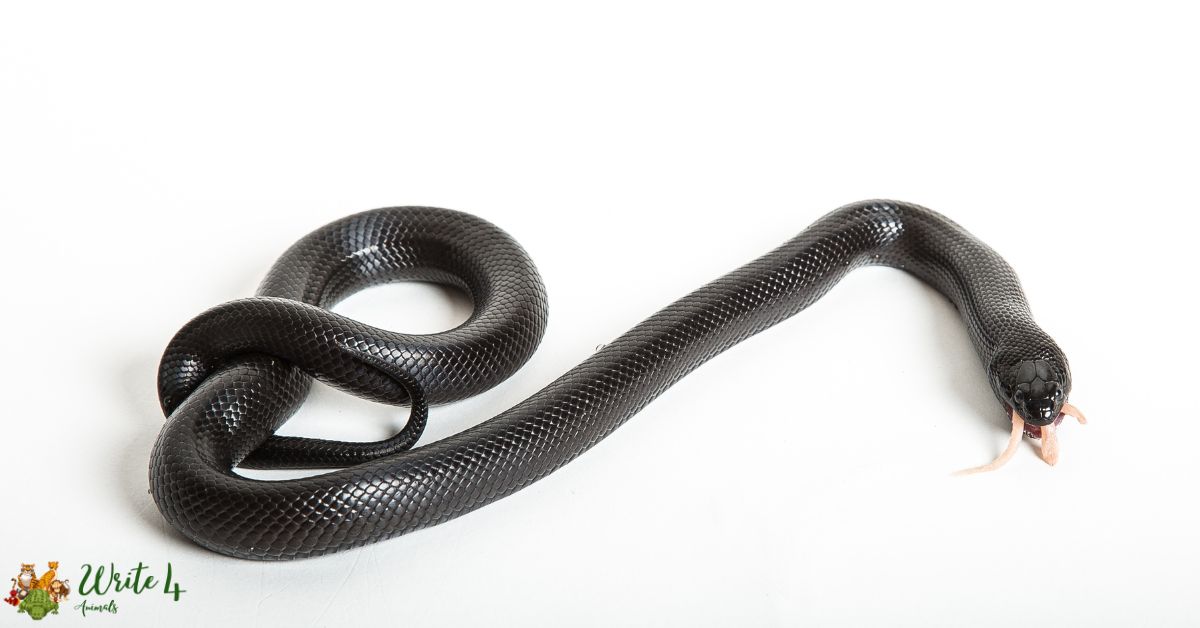
These snakes are constrictors, using their muscular bodies to wrap around their prey and suffocate them before consuming. Mexican Black Kingsnakes require a spacious enclosure with appropriate temperature gradients, hiding spots, and a proper substrate.
They are relatively low maintenance and can make rewarding pets for experienced snake owners. However, it’s important to note that responsible ownership, including proper housing and handling, is crucial to ensure the snake’s well-being.
10. Mexican Black Spiny-tailed Iguana
The Mexican Black Spiny-tailed Iguana (Ctenosaura pectinata) is a large lizard species native to Mexico. As their name suggests, they have spiny scales on their tails, which they use for defense.
Mexican Black Spiny-tailed Iguanas have a robust build and can reach lengths of up to 3 feet. They are predominantly herbivorous, feeding on a variety of plant matter, including leaves, flowers, and fruits.
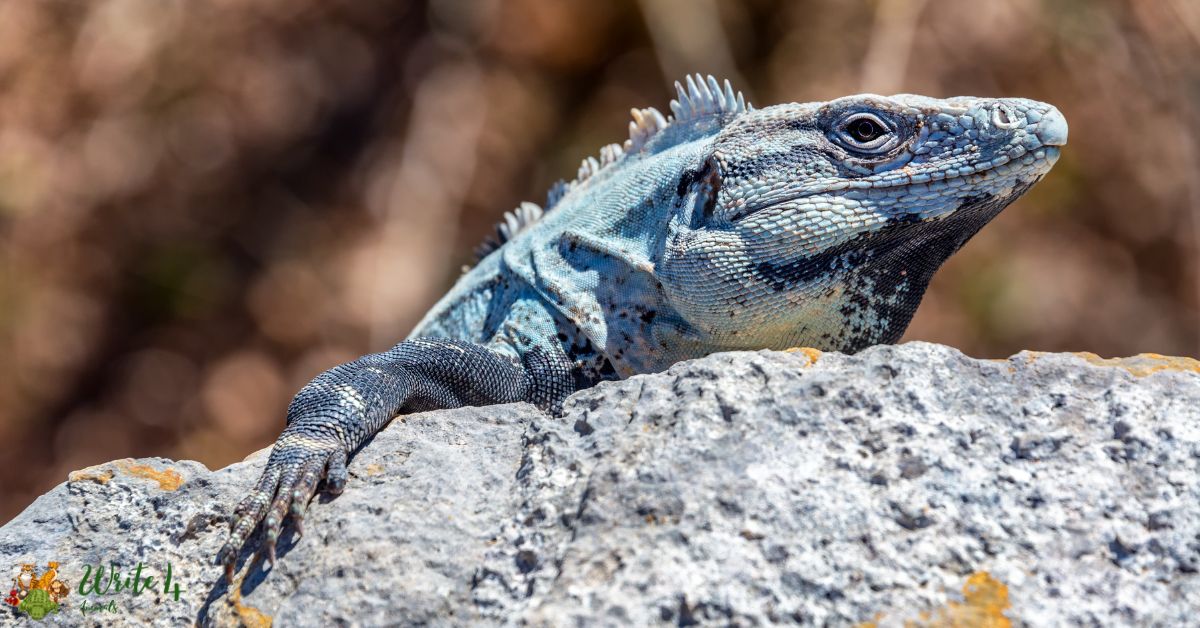
These iguanas are highly adaptable and can be found in various habitats, including arid regions, rocky areas, and tropical forests. They are diurnal and bask in the sun to regulate their body temperature.
Mexican Black Spiny-tailed Iguanas require a spacious enclosure with both terrestrial and elevated areas, as well as UVB lighting and a varied diet. They are known for their intelligence and can develop strong bonds with their owners with proper socialization and consistent care.
11. Mexican Mole Lizard
The Mexican Mole Lizard (Bipes biporus), also known as the Ajolote, is a unique and fascinating lizard species found in Mexico. They have a slender, worm-like body and are adapted for a burrowing lifestyle.
Mexican Mole Lizards have reduced eyes and limb-like structures known as “digging hands,” which they use to navigate underground. They spend the majority of their lives hidden beneath the soil, feeding on small invertebrates and insect larvae.
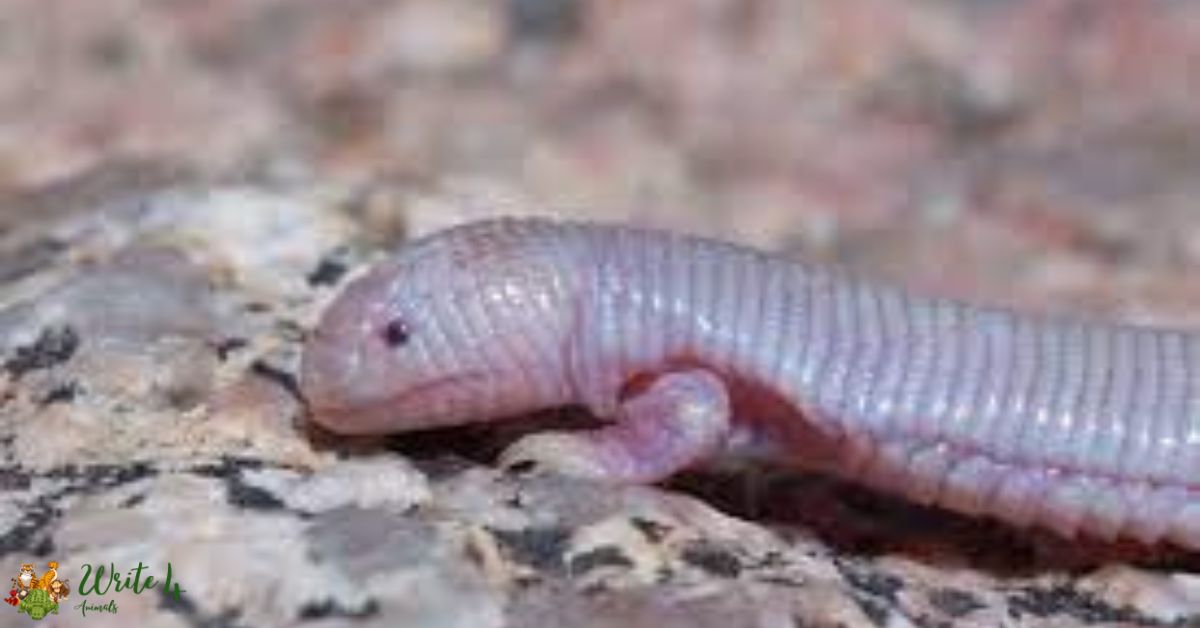
These lizards are legless and move in a serpentine motion. Mexican Mole Lizards are not commonly kept as pets due to their specialized needs and limited availability. They require a substrate that mimics their natural burrowing environment and a secure enclosure with appropriate temperature and humidity levels. Their unique biology and behavior make them a subject of interest among reptile enthusiasts and researchers.
12. Mexican Caecilian Lizard
The Mexican Caecilian Lizard (Bachia heteropa) is a legless lizard species native to Mexico. Caecilian lizards are often mistaken for snakes due to their elongated body and lack of limbs.
However, they are not true snakes but belong to the lizard family. Mexican Caecilian Lizards have a smooth, cylindrical body and a reduced pair of forelimbs. They have a unique biology, with a specialized reproductive mode known as viviparity, where they give live birth to fully-formed young.
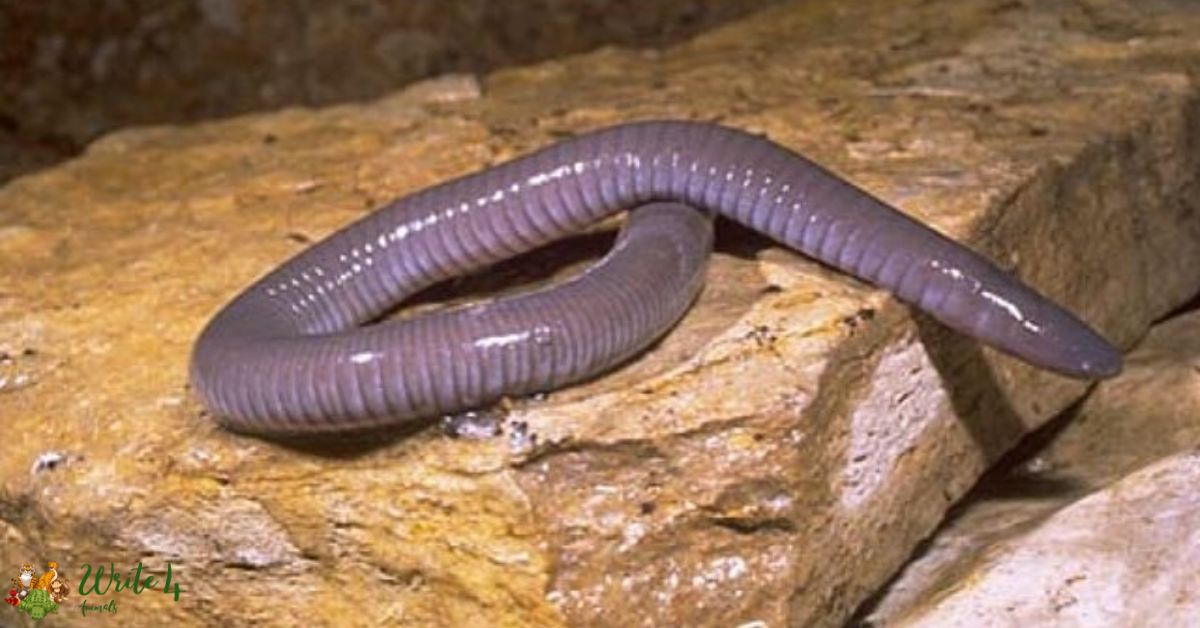
These lizards are primarily insectivorous, feeding on small invertebrates and ants. Mexican Caecilian Lizards are secretive and dwell in leaf litter or beneath rocks. They are not commonly kept as pets due to their specialized care requirements and limited availability. Their distinct characteristics and evolutionary adaptations make them intriguing subjects for herpetology enthusiasts and researchers.
13. Mexican Fence Lizard
The Mexican Fence Lizard (Sceloporus grammicus) is a species of lizard native to Mexico. They are named for their behavior of perching and basking on fences and other elevated structures.
Mexican Fence Lizards are known for their striking coloration, which can vary from grayish-brown to olive or green, with a series of dark stripes along their body. Males often display vibrant blue patches on their throat and belly during the breeding season.
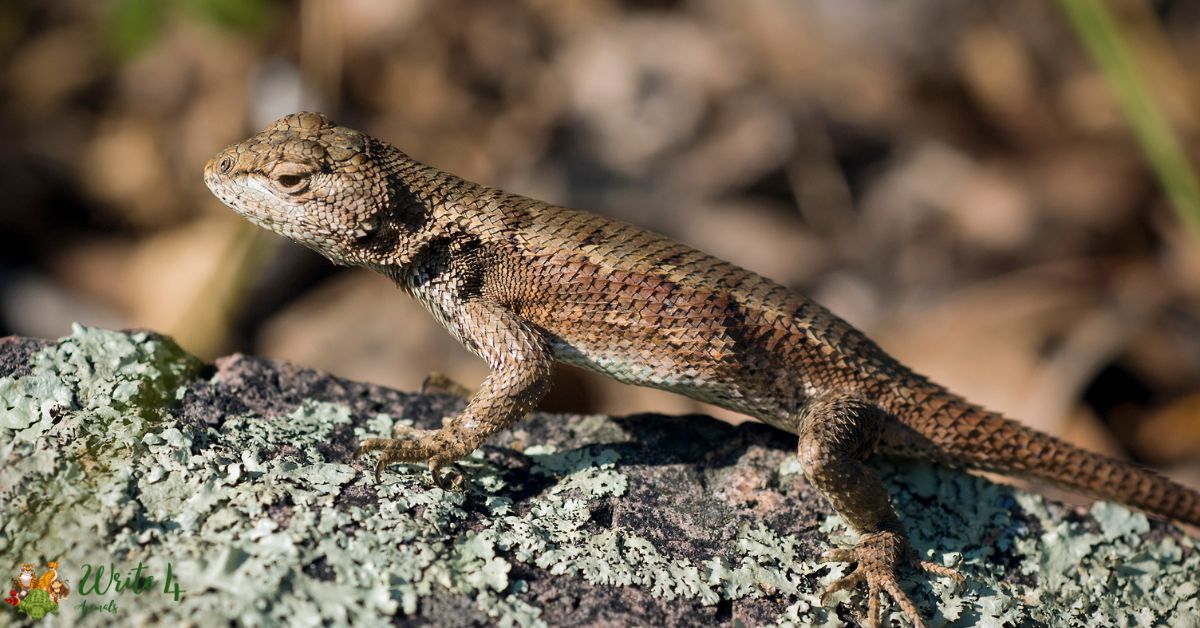
These lizards are diurnal and insectivorous, feeding on a variety of small invertebrates. They are agile climbers and can often be seen scurrying up trees or rocks.
Mexican Fence Lizards are relatively adaptable and can be found in various habitats, from arid deserts to mountainous regions. They are commonly encountered in residential areas and make fascinating subjects for observation and study.
14. Mexican Beaded Gecko
The Mexican Beaded Gecko (Coleonyx elegans) is a small gecko species native to Mexico. They are known for their intricate pattern of raised scales, giving them a beaded appearance
. Mexican Beaded Geckos have a stocky build and typically reach lengths of around 4 to 5 inches. They have a unique ability to shed their tail as a defense mechanism, which can regrow over time. These geckos are primarily nocturnal and are adapted to arid environments.
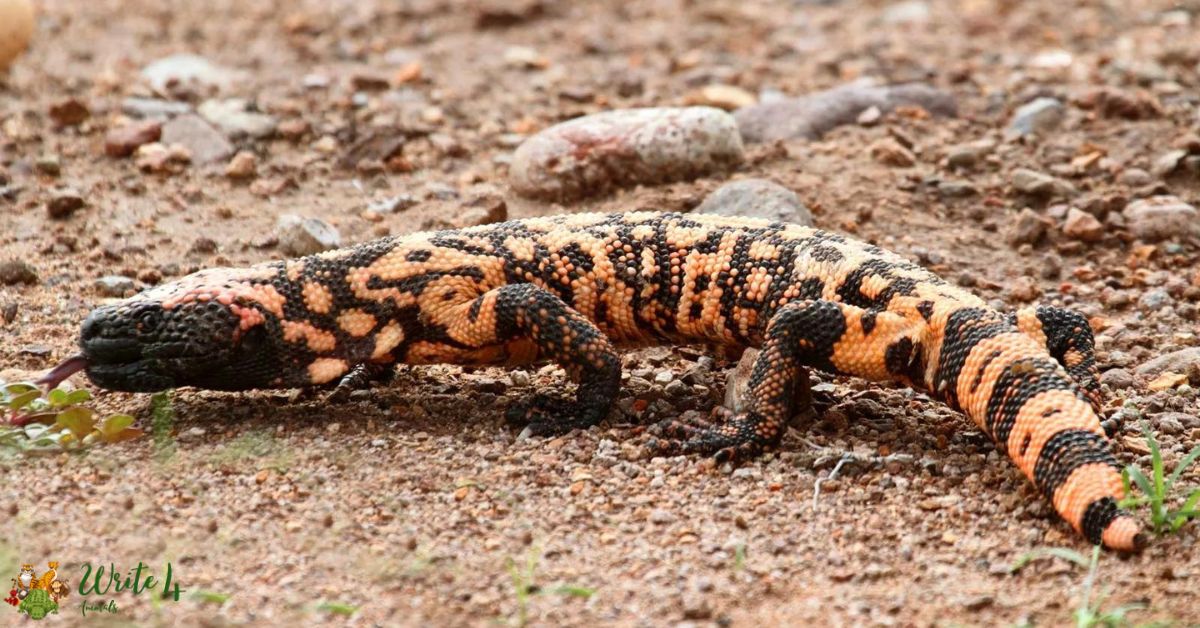
They feed on a diet of insects and other small invertebrates. Mexican Beaded Geckos are relatively docile and can be kept as pets with proper care. They require a well-ventilated enclosure with hiding spots, a heat source, and a substrate that retains moisture. Their distinctive appearance and low-maintenance requirements make them popular choices among gecko enthusiasts.
15. Mexican Satanic Leaf-tailed Gecko
The Mexican Satanic Leaf-tailed Gecko (Uroplatus phantasticus) is a unique and visually striking species of gecko found in the cloud forests of Mexico. These geckos are known for their remarkable camouflage, with leaf-like projections and cryptic coloration that allow them to blend seamlessly into their surroundings.
Mexican Satanic Leaf-tailed Geckos are primarily nocturnal and arboreal, spending their nights hunting for small insects and invertebrates.
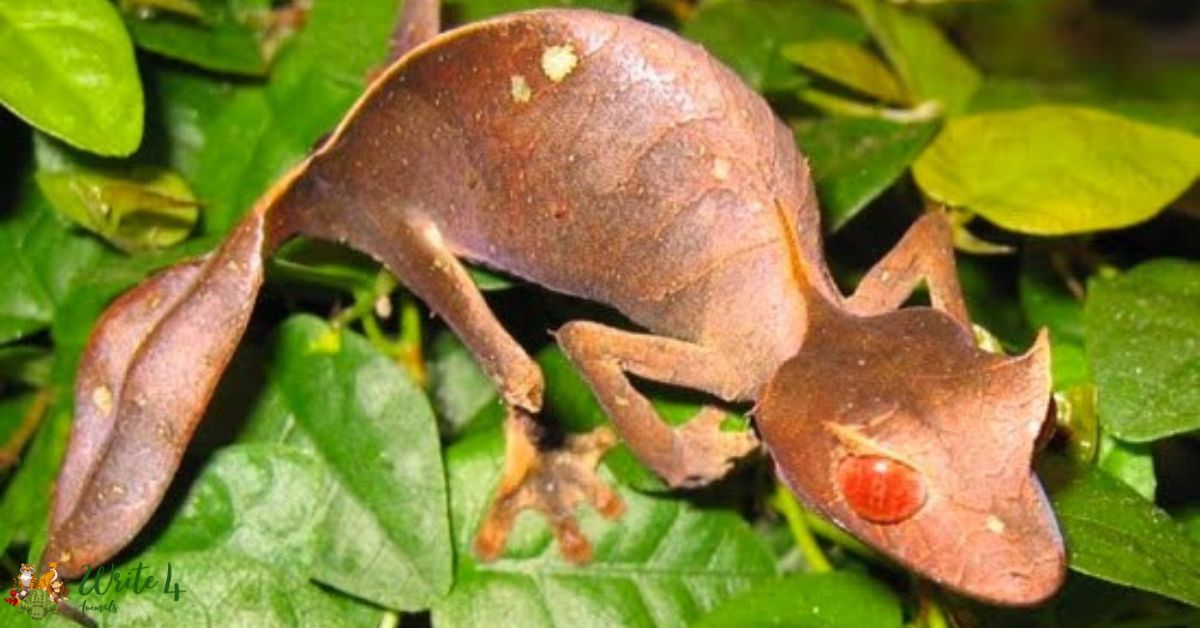
They have large eyes with vertical pupils, which aid in their low-light vision. These geckos have a small size, typically reaching around 4 to 5 inches in length. Due to their specialized care requirements and limited availability, they are more commonly found in the collections of experienced reptile enthusiasts. They require a terrarium with appropriate humidity levels, ample hiding spots, and a diet consisting of live insects.
16. Mexican Spotted Whiptail
The Mexican Spotted Whiptail (Aspidoscelis punctatus) is a species of lizard found in various regions of Mexico. They are known for their slender body, long tail, and distinctive pattern of spots and stripes on their back.
Mexican Spotted Whiptails are highly agile and quick, using their speed to dart across open areas as they forage for small insects and invertebrates. These lizards are diurnal and can often be observed basking in the sun to regulate their body temperature.
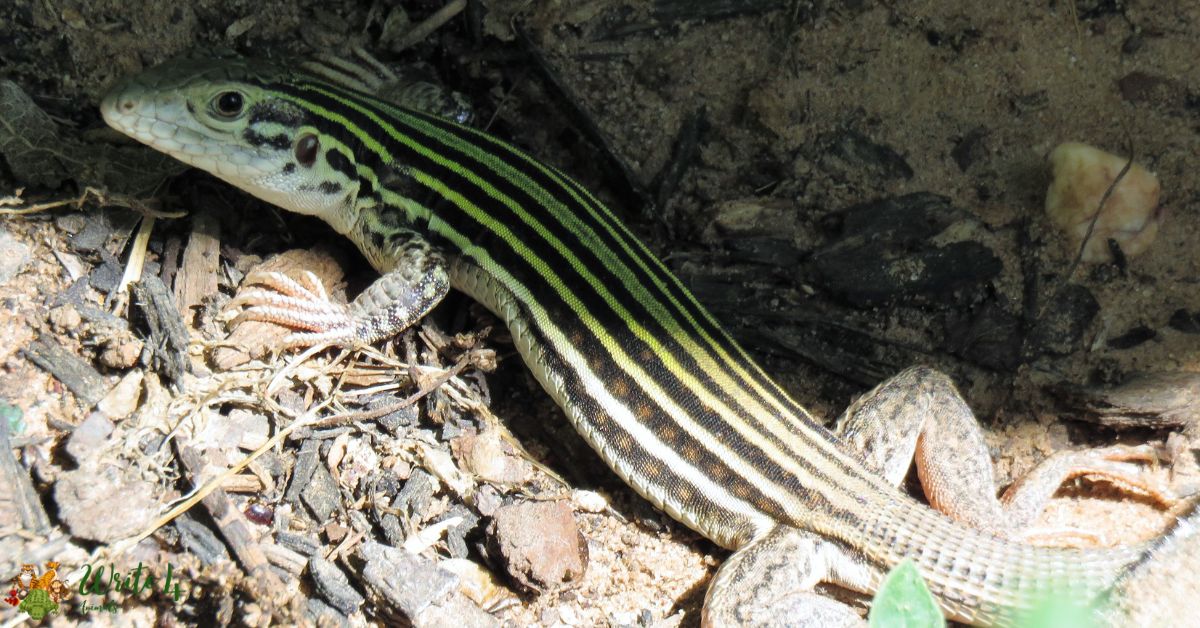
They are also known for their ability to reproduce through parthenogenesis, meaning that females can produce offspring without mating. Mexican Spotted Whiptails are adaptable and can be found in a variety of habitats, from arid deserts to scrublands. They make fascinating additions to reptile collections and require an appropriate enclosure with hiding spots, basking areas, and a diet rich in small invertebrates.
17. Mexican Night Lizard
The Mexican Night Lizard (Xantusia vigilis) is a small lizard species native to Mexico. As their name suggests, they are primarily active during the night, hiding in crevices and rock formations during the day. Mexican Night Lizards have a compact body, short limbs, and rough scales that aid in their camouflage and protection. They are insectivorous, feeding on small invertebrates and spiders.
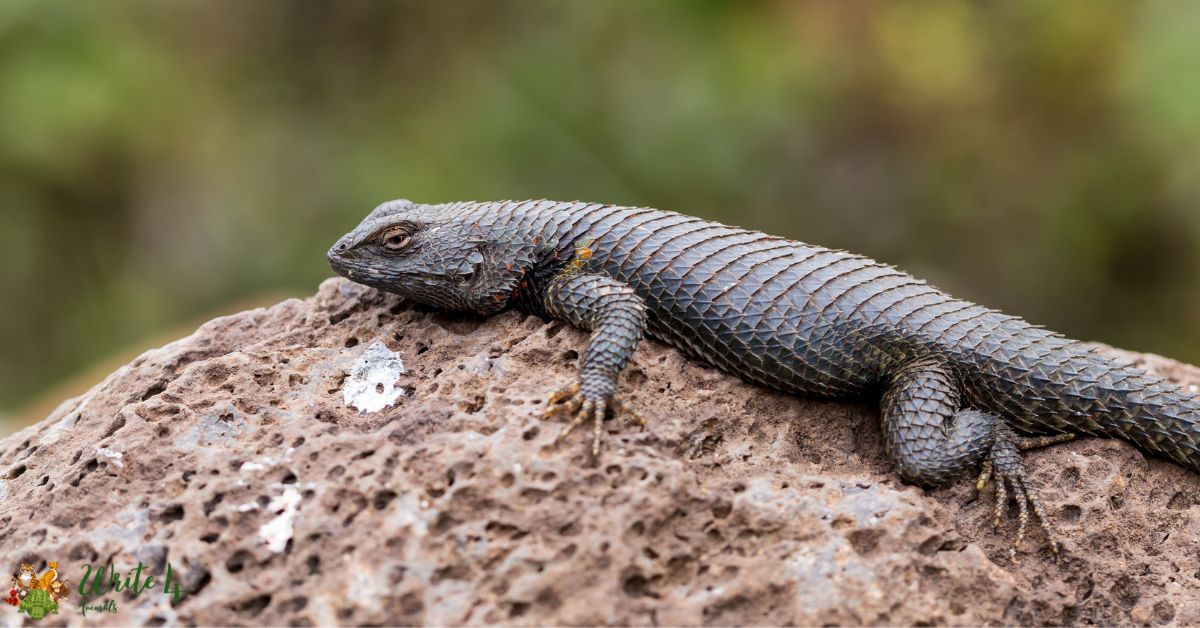
These lizards prefer arid habitats, such as rocky areas and desert landscapes. Mexican Night Lizards are relatively secretive and not commonly kept as pets, but they are appreciated for their unique appearance and behavior. Due to their specialized care needs and limited availability, they are more commonly found in the collections of experienced reptile enthusiasts or in scientific research.
18. Mexican Spotted Box Turtle
The Mexican Spotted Box Turtle (Terrapene nelsoni) is a terrestrial turtle species native to Mexico. They are known for their distinctive dome-shaped shell and vibrant yellow spots on a dark background.
Mexican Spotted Box Turtles have a relatively small size, reaching lengths of around 4 to 6 inches. They are omnivorous, feeding on a diet of both plant matter and small invertebrates.
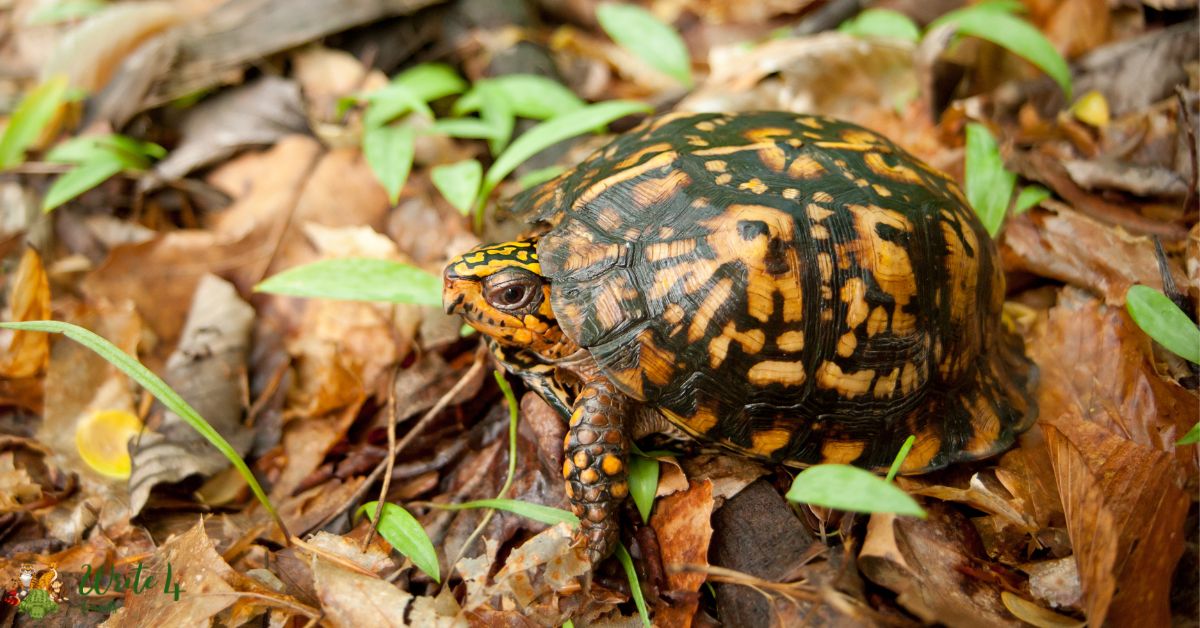
These turtles prefer a habitat consisting of grasslands, woodlands, and semi-arid regions. They require a balanced diet, access to water for swimming and hydration, and a suitable enclosure that provides both land and water areas. Mexican Spotted Box Turtles are appreciated for their unique appearance and are sometimes kept as pets by reptile enthusiasts who can provide the proper care they need.
19. Mexican Dwarf Gecko
The Mexican Dwarf Gecko (Sphaerodactylus notatus) is a small gecko species found in Mexico. As their name suggests, they have a tiny size, typically ranging from 1 to 2 inches in length. Mexican Dwarf Geckos have a flattened body, adhesive toe pads, and large eyes. They are nocturnal and are primarily insectivorous, feeding on small invertebrates such as ants, spiders, and mites.
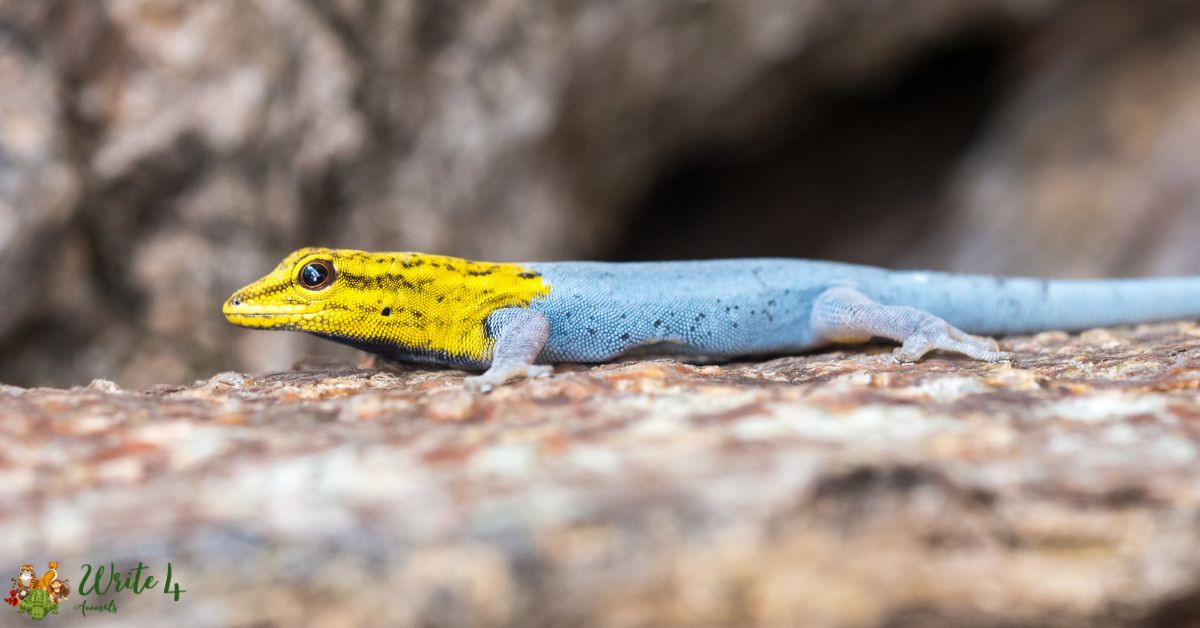
These geckos are arboreal and are typically found in forested areas, where they can cling to vegetation and tree trunks. Due to their small size and specific care requirements, Mexican Dwarf Geckos are not commonly kept as pets. However, their unique appearance and behavior make them of interest to reptile enthusiasts and researchers studying these fascinating creatures.
20. Mexican Four-lined Skink
The Mexican Four-lined Skink (Plestiodon quadrilineatus) is a species of skink native to Mexico. They are characterized by their slender bodies, shiny scales, and four distinctive dark stripes running along their back.
Mexican Four-lined Skinks are diurnal and are typically found in a variety of habitats, including forests, rocky areas, and grasslands. They are omnivorous, feeding on a diet of insects, spiders, fruits, and small invertebrates.
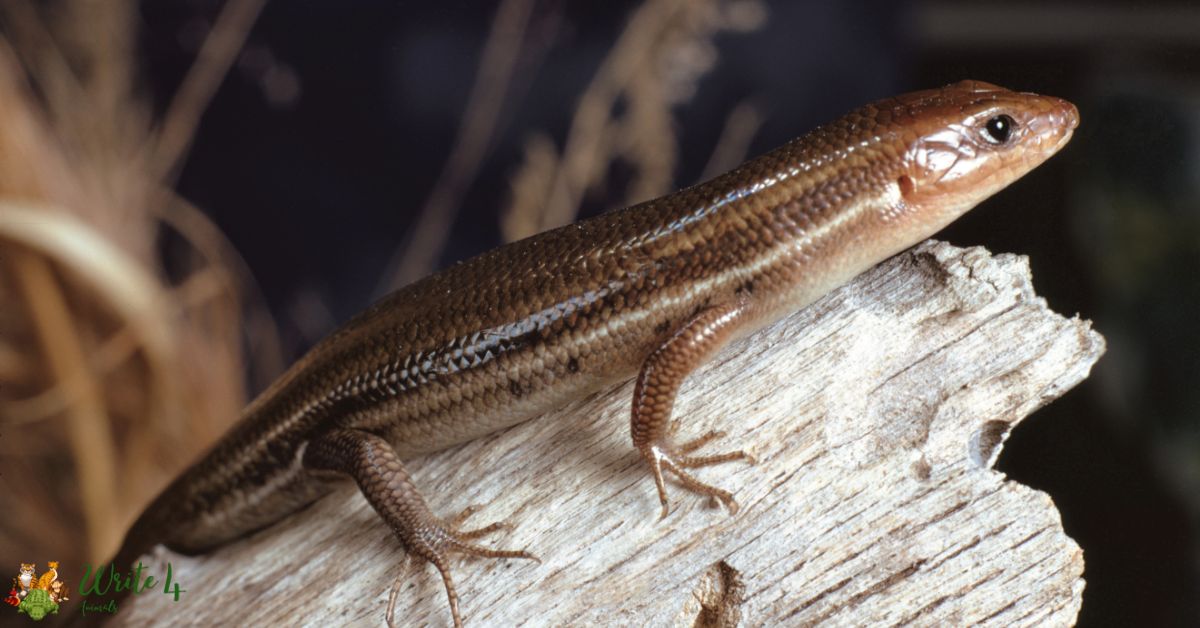
These skinks are known for their quick movements and the ability to shed their tails as a defense mechanism. They are relatively small in size, typically reaching lengths of around 5 to 7 inches. Mexican Four-lined Skinks are not commonly kept as pets, but their unique coloration and active behavior make them interesting subjects for observation in their natural habitats.
21. Mexican Green Tegu
The Mexican Green Tegu, also known as the Mexican Whiptail Lizard, is a species of large lizard found in Mexico. With its robust build and vibrant green coloration, this tegu species is a captivating sight to behold.
Known for its agility and quick movements, the Mexican Green Tegu is primarily terrestrial but can also climb trees and rocks with ease. It is an insectivorous species, feeding on a diet of insects, spiders, and other small invertebrates.
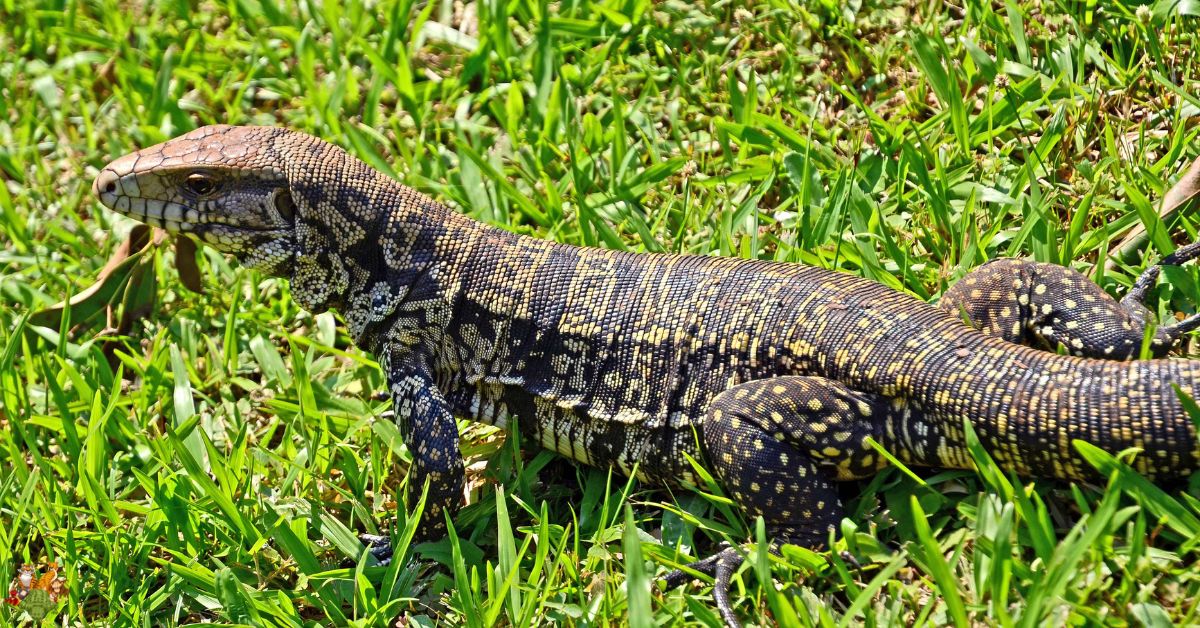
This lizard is characterized by its long tail and elongated head. Although it shares similarities with its larger cousin, the Argentine Black and White Tegu, the Mexican Green Tegu is smaller in size and has distinct characteristics that make it unique. With its striking appearance and active behavior, the Mexican Green Tegu is a remarkable lizard species found in the diverse landscapes of Mexico.
Conclusion
In conclusion, Mexico is home to a diverse array of lizard species, each with its own unique characteristics and adaptations. From the fearless and striking Mexican Beaded Lizard to the camouflaged Mexican Satanic Leaf-tailed Gecko, these reptiles showcase the incredible biodiversity found in the country.
The Mexican Night Lizard and Mexican Spotted Box Turtle exhibit fascinating behavior and have specific habitat preferences, while the Mexican Dwarf Gecko and Mexican Four-lined Skink captivate with their small size and distinct features.
Whether they possess venomous glands, legless bodies, or stunning patterns, these lizards contribute to the rich natural heritage of Mexico and offer opportunities for reptile enthusiasts and researchers alike to study and appreciate their remarkable biology. By understanding and preserving these unique species, we can ensure their survival and continue to admire the beauty and diversity of Mexico’s lizard populations.
Frequently Asked Questions
[sc_fs_multi_faq headline-0=”h4″ question-0=”Are the Mexican lizard species mentioned in this article endangered?” answer-0=”Some Mexican lizard species mentioned, such as the Mexican Spotted Box Turtle, may be endangered or face conservation concerns due to habitat loss and illegal collection. However, the conservation status varies for each species, and it’s important to consult updated resources for specific information.” image-0=”” headline-1=”h4″ question-1=”Can these Mexican lizard species be kept as pets?” answer-1=”Some Mexican lizard species, like the Mexican Dwarf Gecko, can be kept as pets with proper care and housing. However, others, such as the Mexican Beaded Lizard, may require specialized permits and experienced owners due to their venomous nature or specific needs. Always research the specific requirements of a species before considering it as a pet.” image-1=”” headline-2=”h4″ question-2=”What is the lifespan of Mexican lizard species?” answer-2=”The lifespan of Mexican lizard species varies depending on the species and individual factors such as care, diet, and genetics. Generally, captive lizards can live anywhere from a few years to several decades. It’s essential to provide proper husbandry and a suitable environment to ensure their well-being and longevity. ” image-2=”” headline-3=”h4″ question-3=”Are Mexican lizards aggressive towards humans?” answer-3=”The behavior of Mexican lizards towards humans can vary depending on the species and individual temperament. While some may exhibit aggression if threatened or cornered, most Mexican lizard species are not inherently aggressive towards humans. However, it’s important to respect their space and handle them with care to avoid stress or potential bites.” image-3=”” headline-4=”h4″ question-4=”What do Mexican lizards eat?” answer-4=”Mexican lizard species have diverse diets. Some are herbivorous, feeding on plant material such as leaves, fruits, and flowers. Others are insectivorous, preying on a variety of small invertebrates, spiders, or insects. Specific dietary preferences vary depending on the species, and it’s crucial to research and provide a suitable diet for the particular lizard species being cared for.” image-4=”” headline-5=”h4″ question-5=”Are these Mexican lizards difficult to care for?” answer-5=”The level of difficulty in caring for Mexican lizard species can vary. Some, like the Mexican Dwarf Gecko, have relatively straightforward care requirements and can be suitable for beginner reptile keepers.” image-5=”” count=”6″ html=”true” css_class=””]
Recommended
1. 12 Biggest Cat Breed in the World
2. Wolf vs Husky: Unraveling the Similarities and Differences
